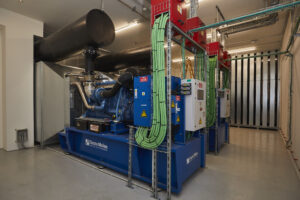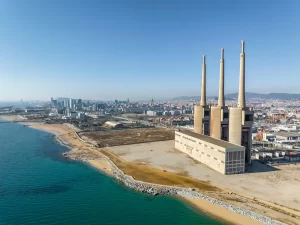On April 28 at 12:33 p.m., Spain and Portugal suddenly lost 15 gigawatts of electric power. It lasted just five seconds, but that drop — equivalent to 60% of the country’s electricity demand at the time — left nearly the entire country in the dark.
Elevators, household appliances, trains, computers, and virtually every device we depend on daily stopped functioning. The outage also triggered a widespread telecommunications disruption, leaving most mobile phones unable to make calls, send social media messages, or access information. This inability to contact loved ones digitally, get informed (unless you had a battery-powered analog radio), or even make purchases without cash highlighted just how dependent we are on electricity — and how vulnerable the system can be.
Guaranteed Operational Continuity at Barcelona CLS During Power Interruptions
In line with critical incident protocols, hospitals remained operational thanks to diesel generators that allowed them to self-supply electricity. Similarly, a proactive approach to energy resilience and the rapid activation of backup systems allowed Barcelona Cable Landing Station (CLS) to continue operating throughout the power outage.
These systems include autonomous electric generators and emergency batteries designed to support both alternating current (AC) and direct current (DC) equipment — ensuring stable, uninterrupted service. This is the reason why Barcelona CLS withstood the power outage and maintained uninterrupted services.
Autonomous Generation and Battery Backup
The station is equipped with 750 kW diesel generators that activate automatically upon detecting any anomaly in the power grid. Each unit can operate independently for up to 72 hours, and together, they enable the site to run autonomously for up to four days.
The battery backup system is scaled according to the criticality of the electrical loads:
- AC Equipment: The associated batteries provide up to 6 hours of autonomy. These systems power general infrastructure like lighting, ventilation, and climate control.
- DC Equipment: Batteries provide up to 24 hours of autonomous operation. These systems power highly sensitive components, such as the submarine cable repeaters located approximately every 80 km along the cable — essential for maintaining transmission integrity.
The Critical Role of AC and DC Systems in a Cable Landing Station
The distinction between AC and DC systems is crucial at a submarine cable landing station: while AC systems support auxiliary infrastructure, DC systems are responsible for the continuous operation of the telecom network in each submarine cable room.
Renewable Energy as a Strategic Complement
As part of its resilience and sustainability strategy, Barcelona CLS also operates a photovoltaic solar installation that boosts the site’s energy autonomy. The solar plant produces an estimated 1.19 GWh annually — a meaningful contribution to the station’s efficient and sustainable operation.
An Example of Service Continuity Assurance
What happened at Barcelona CLS is a clear example of the reliability that landing stations can offer in ensuring continuous service. At all times, our technical teams closely monitored the situation to uphold the highest levels of operational reliability, and this information was transparently communicated to all our clients and partners.






